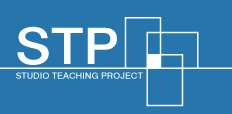
Application of Indicators
Principles for Applying the Indicators
All three aspects of product, process and person should be balanced to ensure that graduates are well rounded i.e., that they are able to produce good designs/artworks; have the required knowledge, skills and attitudes to manage the process of design/art-making; and to develop as a person.
The following five principles set out how the indicators provided can be applied in practice:
1. Flexibility
The indicators are flexible in that every indicator does not need to be assessed every time an assessment is undertaken. Assessment is considered sound as long as the total assessment experience for students in their program of study addresses, develops and assesses all core aspects over time.
2. Touchstone for Reflection and Re-Alighment of assessment in studio
This can be used both at the individual subject as well as the degree level. At the level of the whole degree, the indicators can be mapped to ensure that the aspects identified as fundamental to creative practice are assessed at appropriate times in the student’s learning experience over the period of the degree.
If it is revealed that the subject or degree is privileging one or more aspects at the expense of others (for example the product), the indicators can serve as a reminder for lecturers that it is important to support the development and assessment (through allocation of marks) of all aspects fundamental to learning. Using the indicators in this way will help to ensure that assessment, at both the individual subject and degree level, is not overly focused (in an ad hoc way) on one aspect and thus, sending a message to students that may not be quite what is intended.
3. Developmental assessment of student through degree program
It is appropriate to focus on different dimensions at different times. When developing creative practice lecturers can consider each of the dimensions (product, process or person) in relation to learners and their stage of learning, and then focus the design and level of assessment tasks and associated indicators accordingly.
For example, in the early stages of a degree it may be considered important that more attention is paid to the development and assessment of the process dimension, with interaction, engagements, hard skills, soft skills, and reflective practice indicators used as foundational skills required for the development of the product dimension later on in the program.
4. Using Rubrics to inform the design of studio assessment tasks
Using the indicators in this way will contribute to ensuring that assessment tasks and criteria are designed in line with what is seen as educationally sound and fundamental to creative practice. Providing students with rubrics contributes to demystifying the assessment process and provides students with clear expectations and standards to work towards.
5. Develop a Shared Understanding
The indicators can be openly discussed with students and in this way facilitate the development of a shared understanding of what is being assessed and why. Any mismatches between lecturer and student conceptions can then be addressed. There is now substantial evidence that this has a positive impact on, and supports, student learning.



